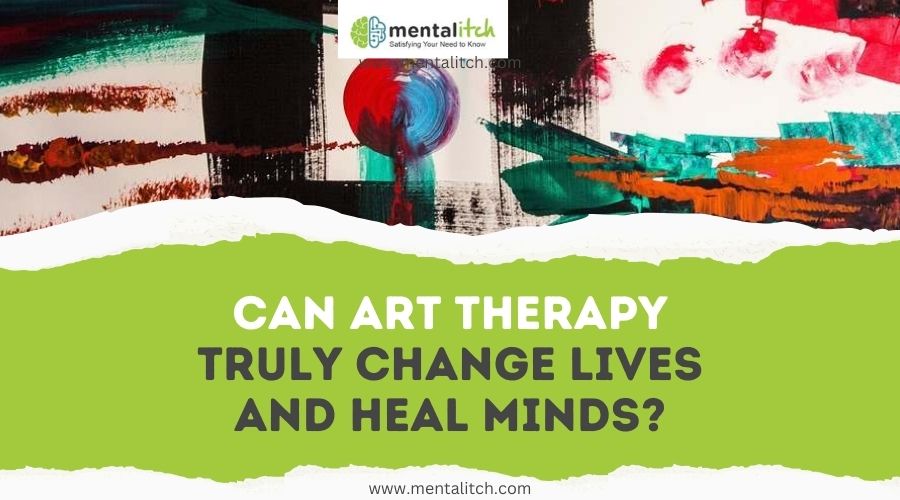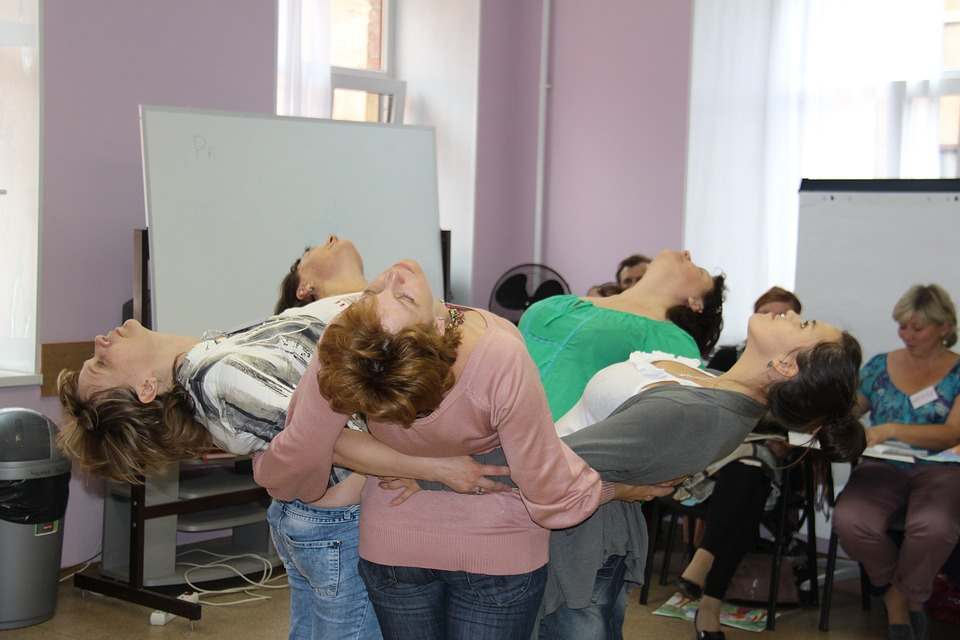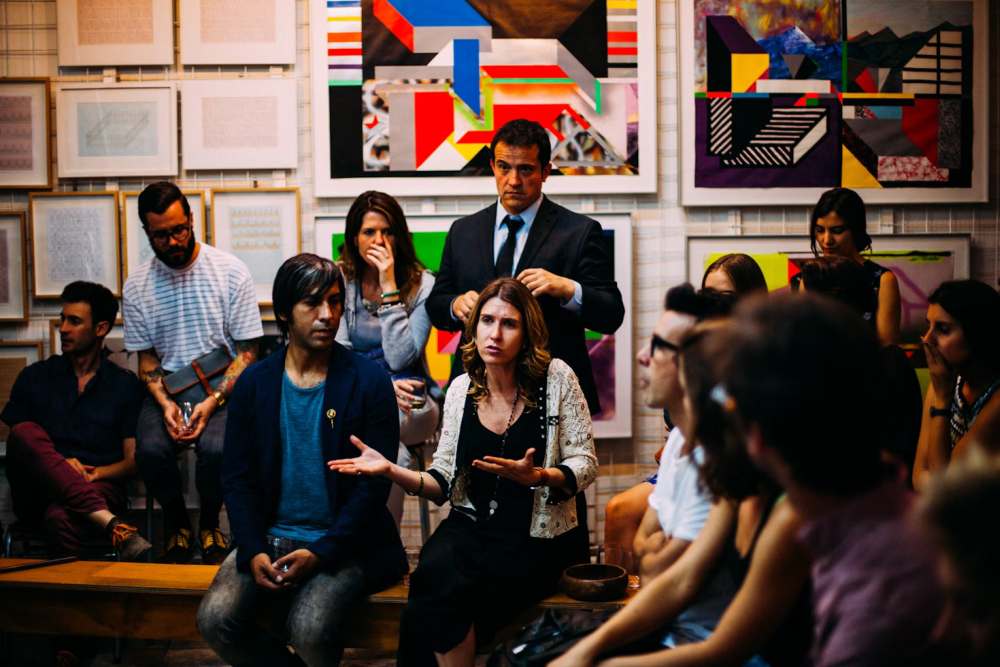In the world of mental health, there’s a unique form of therapy that doesn’t rely on just talking. It’s called art therapy. Instead of using words, people use colors, shapes, and images to express themselves. Now, you might be wondering: Can art therapy really make a difference? Can it truly help people feel better? These are important questions because mental health matters a lot. Art therapy is like a special language where feelings and thoughts can be expressed without needing to find the right words.
But while many believe in the power of art therapy to change lives and heal minds, there are also some who question its effectiveness. So, let’s explore both sides of the story to understand whether art therapy is a powerful tool for mental health or if it’s just another option among many.
The Good Side
Let’s begin with the pros of art therapy and see how it can actually bring about a positive impact on lives and healing minds.
A Tool for Healing
Art therapy offers a unique path to healing through artistic expression. When someone creates art, whether it’s painting, drawing, or sculpting, it can feel like a release. It’s like opening a window to let out all the thoughts and feelings that might feel trapped inside. This process isn’t just about making something pretty; it’s about tapping into emotions and experiences that might be hard to put into words.
Case studies and testimonials from individuals who have experienced the transformative power of art therapy further highlight its effectiveness. For example, Sarah, a survivor of trauma, found solace in creating collages as part of her therapy sessions. Through the process of selecting images and arranging them on paper, she was able to reconstruct her narrative and reclaim a sense of agency over her life. Similarly, James, who struggled with anxiety, discovered relief through doodling and sketching. The simple act of putting pen to paper allowed him to quiet his racing thoughts and find moments of calm amidst the chaos.
Research in the field of psychology has also shed light on the positive impact of art therapy on mental health. Studies have shown that engaging in artistic expression can lead to significant reductions in symptoms of depression, anxiety, and PTSD. For example, a study published in the Journal of the American Art Therapy Association found that participants who engaged in art therapy showed improvements in mood and self-esteem compared to those who did not participate in therapy. These findings suggest that art therapy may offer a valuable adjunct to traditional forms of psychotherapy in treating a wide range of mental health conditions.
In addition to its therapeutic benefits, art therapy offers a unique opportunity for individuals to connect with others and build supportive relationships. Group art therapy sessions provide a space for individuals to share their artwork, stories, and experiences in a supportive and non-judgmental environment. This sense of belonging and community can be incredibly empowering, helping individuals feel less alone in their struggles and more connected to others who understand what they’re going through. Art therapy can also be beneficial for older adults and seniors. Read our article on the Best Art Therapies for Older Adults to know more about what types of art therapies are suitable for them.
Empowerment through Creativity
Art therapy is more than just creating art; it’s about empowering individuals through creativity. Imagine a world where you can express yourself freely, without worrying about saying the right thing or being judged. That’s what art therapy offers—a safe space where people can explore their thoughts, feelings, and experiences in a non-verbal way.
One of the key ways art therapy empowers individuals is by encouraging self-expression and self-awareness. When someone engages in artistic activities, they’re invited to tap into their innermost thoughts and emotions. Through painting, drawing, or sculpting, individuals can visually represent what’s going on inside their minds and hearts. This process helps them gain a deeper understanding of themselves and their experiences, fostering a sense of self-awareness and acceptance.
Moreover, art therapy provides a non-verbal outlet for emotions and experiences. For many people, putting their feelings into words can be challenging. But through art, they can communicate in a language that transcends words. Colors, shapes, and images become a means of expressing complex emotions and experiences that may be difficult to articulate verbally. This non-verbal communication allows individuals to release pent-up emotions and process their experiences in a safe and supportive environment.
Additionally, art therapy fosters a sense of control and agency over one’s healing process. When faced with mental health challenges, it’s easy to feel powerless and overwhelmed. But through art therapy, individuals regain a sense of control by actively engaging in the creative process as some forms of therapies also help with anxiety. They get to decide what materials to use, what colors to paint with, and what imagery to explore. This autonomy empowers them to take ownership of their healing journey, making choices that feel meaningful and empowering.
The Bad Side
Is art therapy really a way to heal your mind? Some might argue otherwise for the following reasons.
Lack of Evidence
While art therapy holds promise as a therapeutic approach, it’s important to acknowledge and address some of the limitations and skepticism surrounding its effectiveness. One of the primary concerns is the lack of empirical evidence or conclusive research in certain areas of art therapy.
Unlike more traditional forms of psychotherapy, such as cognitive-behavioral therapy, art therapy has not been subjected to the same level of rigorous scientific scrutiny. This means that there may be gaps in our understanding of how art therapy works and its specific effects on mental health outcomes.
Furthermore, measuring the efficacy of art therapy can be challenging compared to traditional therapies. In many cases, the outcomes of art therapy are subjective and difficult to quantify. While participants may report feeling better or experiencing improvements in their mental health, these self-reported outcomes may not always align with objective measures of symptom reduction or functioning.
This discrepancy can make it difficult to determine the true effectiveness of art therapy and compare it to other treatment modalities.
Inaccessible
Moreover, there is a potential for art therapy to be inaccessible or culturally insensitive in certain contexts. Access to trained art therapists may be limited, particularly in rural or underserved areas, making it difficult for some individuals to access art therapy services.
Additionally, cultural differences in attitudes towards art and mental health may impact the effectiveness of art therapy interventions. What works well in one cultural context may not be appropriate or effective in another, highlighting the importance of cultural competence and sensitivity in art therapy practice.
Miscommunication
In art therapy sessions, clients are encouraged to express themselves through various artistic mediums such as painting, drawing, or sculpting. While this form of expression can be incredibly liberating and cathartic, it also comes with the inherent risk of misinterpretation or miscommunication.
When clients create art, they are often tapping into deeply personal and sometimes complex emotions and experiences. However, the interpretation of art is subjective, and what may seem clear to the client may be open to different interpretations by the art therapist or others. For example, a client may paint a dark, stormy sky to represent feelings of sadness or turmoil, but the therapist may interpret it as anger or frustration.
Similarly, clients may use symbols or imagery in their artwork that hold personal significance but may not be immediately apparent to others. This can lead to misunderstandings or misinterpretations of the client’s intentions or emotions. For instance, a client may include a butterfly in their artwork, which for them symbolizes transformation and growth, but the therapist may interpret it as a symbol of fragility or vulnerability.
These misinterpretations or misunderstandings can create barriers to effective communication and hinder the therapeutic process. If the client feels that their artwork is being misunderstood or misinterpreted, they may become frustrated or discouraged, leading to a breakdown in the therapeutic relationship. This lack of understanding can undermine the client’s sense of validation and acceptance, which are essential for healing to occur.
Moreover, miscommunication in art therapy sessions can also arise from differences in cultural or personal interpretations of art. What may be considered meaningful or significant in one culture may not hold the same significance in another. This cultural disconnect can lead to further misunderstandings and hinder the effectiveness of the therapeutic process.
Final Words
Despite its drawbacks, art therapy remains a valuable tool for promoting mental health and well-being. Through creative expression, individuals can explore their emotions, gain self-awareness, and find empowerment. While more research is needed to fully understand its effectiveness, countless personal testimonies attest to its positive impact. Art therapy offers a unique and accessible way for individuals to heal and grow, emphasizing the importance of creativity and self-expression in the journey towards mental wellness.




